
Neo-Expressionism - II
Paul Rebeyrolle
1926 – 2005

Paul Rebeyrolle dans son atelier
Paul Rebeyrolle
(3 November 1926 in Eymoutiers – 7 February 2005 in Côte-d'Or) was a French painter.
As a child he had tuberculosis of the bone, which caused for long periods of immobility. Later he studied in Limoges and joined the French Communist Party. He ultimately broke with the party because of events related to the Hungarian Revolution of 1956.
His art is often concerned with landscapes, but is marked by violence and rage. He received praise from François Pinault, Jean-Paul Sartre, Michel Foucault and others. Some of his famous works are called "Frogs" 1966, "Still Life" 1966, and "Trout" 1956.

Paul Rebeyrolle dans son atelier

Paul Rebeyrolle

Paul Rebeyrolle

Paul Rebeyrolle

Paul Rebeyrolle

Paul Rebeyrolle

Paul Rebeyrolle

Paul Rebeyrolle

Paul Rebeyrolle

Paul Rebeyrolle

Paul Rebeyrolle

Paul Rebeyrolle

Paul Rebeyrolle

Paul Rebeyrolle

Paul Rebeyrolle

Paul Rebeyrolle

Paul Rebeyrolle

Paul Rebeyrolle
Pierre Alechinsky
b.1927

Pierre Alechinsky
(born 19 October 1927) is a Belgian artist. He has lived and worked in France since 1951. His work is related to tachisme, abstract expressionism, and lyrical abstraction.
Alechinsky was born in Schaerbeek, Belgium, to a Russian Jewish father and a Belgian Walloon mother. In 1944 he attended the l'École nationale supérieure d'Architecture et des Arts décoratifs de La Cambre, Brussels where he studied illustration techniques, printing and photography. In 1945 he discovered the work of Henri Michaux, Jean Dubuffet and developed a friendship with the art critic Jacques Putman.
In 1949 he joined Christian Dotremont, Karel Appel, Constant, Jan Nieuwenhuys and Asger Jorn to form the art group COBRA. He participated both with the COBRA exhibitions and went to Paris to study engraving at Atelier 17 under the guidance of Stanley William Hayter in 1951.
In 1954 he had his first exhibition in Paris and started to become interested in Chinese and Japanese calligraphy. In the early 1950s he was the Paris correspondent for the Japanese journal Bokubi (the Beauty of Ink) published by Morita Shiryu of the Bokujinkai group. In 1955, encouraged by Henri Storck and Luc de Heusch, he left for Japan with his wife. He exhibited Night, 1952 (Ohara Museum of Art, Kurashiki) and made a film: Japanese Calligraphy – Christian Dotremont would write the commentary with music by André Souris.
By 1960 he had exhibited in London, Bern and at the Venice Biennial, and then in Pittsburgh, New York City, Amsterdam and Silkeborg as his international reputation grew.
He worked with Walasse Ting and continued to be close to Christian Dotremont. He also developed links with André Breton.

Pierre Alechinsky

Pierre Alechinsky

Pierre Alechinsky

Pierre Alechinsky

Pierre Alechinsky

Pierre Alechinsky

Pierre Alechinsky
R. B. Kitaj
1932 – 2007
Ronald Brooks Kitaj
(October 29, 1932 – October 21, 2007) was an American artist who spent much of his life in England.
He was born in Chagrin Falls, Ohio, United States. His Hungarian father, Sigmund Benway, left his mother, Jeanne Brooks, shortly after he was born and they were divorced in 1934. His mother was the American-born daughter of Russian-Jewish immigrants. She worked in a steel mill and as a teacher. She remarried in 1941, to Dr Walter Kitaj, a Viennese refugee research chemist, and Ronald took his surname. His mother and stepfather were non-practicing Jews. He was educated at Troy High School (New York). He became a merchant seaman with a Norwegian freighter when he was 17 and travelled by boat to Havana and Mexico.
He studied at the Akademie der bildenden Künste in Vienna and the Cooper Union in New York City. After serving in the United States Army for two years, in France and Germany, he moved to England to study at the Ruskin School of Drawing and Fine Art in Oxford (1958–59) under the G.I. Bill, where he developed a love of Cézanne, and then at the Royal College of Art in London (1959–61), alongside David Hockney, Derek Boshier, Peter Phillips, Allen Jones and Patrick Caulfield. Richard Wollheim, the philosopher and David Hockney remained lifelong friends. He lived in California from 1967-68 and became friends with Robert Creeley and painter Jess Collins.
Kitaj married his first wife, Elsi Roessler, in 1953; they had a son, screenwriter Lem Dobbs, and adopted a daughter, Dominie. Elsi committed suicide in 1969. After living with Sandra Fisher for 12 years, he married her in December 1983 and they had one son, Max. Sandra Fisher died in 1994, at age 47, from acute disseminated encephalomyelitis (not an aneurysm, as is commonly written). Kitaj had a mild heart attack in 1990. He died in Los Angeles in October 2007, eight days before his 75th birthday. Seven weeks after Kitaj's death, the Los Angeles County coroner ruled that the cause of death was suicide by suffocation.

R.B. Kitaj
Self-portrait

The Ohio Gang
R. B. Kitaj

If Not, Not
R. B. Kitaj

America (Baseball)
R. B. Kitaj

Apotheosis of Groundlessness
R. B. Kitaj

R. B. Kitaj
Novella

Cecil Ct London WC2 (The Refugees)
R. B. Kitaj

Desk Murder
R. B. Kitaj
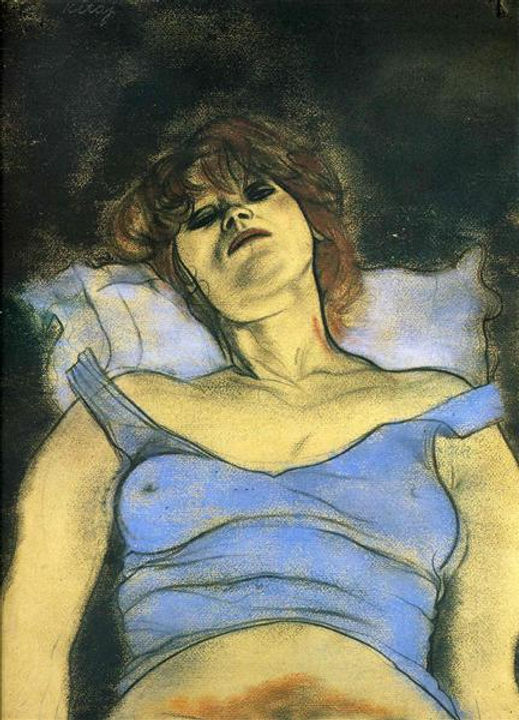
Mary Ann
R. B. Kitaj

Marynka Smoking
R. B. Kitaj

R. B. Kitaj
Untitled

Portrait of Walter Lippman
R. B. Kitaj

The Autumn of Central Paris
R. B. Kitaj

The Man of the Woods and the Cat of the Mountains
R. B. Kitaj

The Rise of Fascism
R. B. Kitaj

La hispanista (Nissa Torrents)
R. B. Kitaj
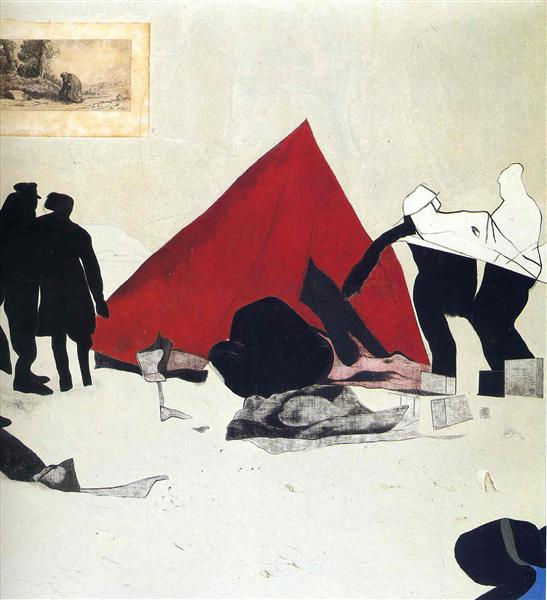
Dismantling the Red Tent
R. B. Kitaj

R.B. Kitaj
The Wedding
.png)
R. B. Kitaj
A Rash Act

R. B. Kitaj
A Life
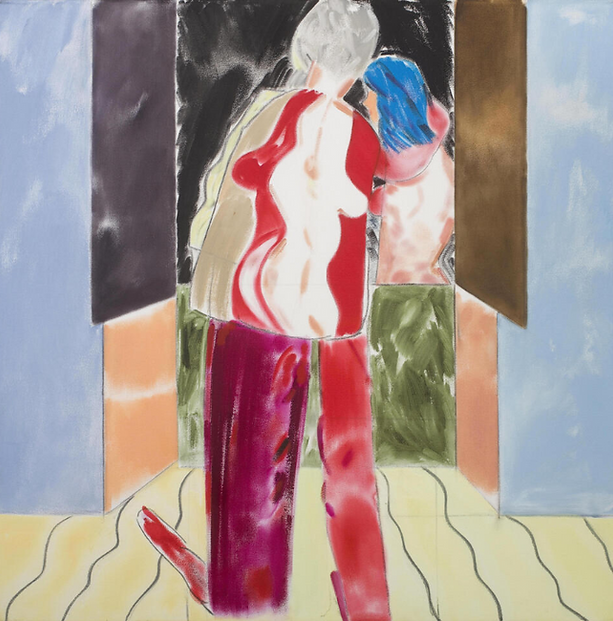.png)
R. B. Kitaj
Kabbalist and Shekhina

R. B. Kitaj
Untitled
Vladimir Velickovic
1935 – 2019

VLADIMIR VELICKOVIC

VLADIMIR VELICKOVIC
Vladimir Velickovic
(Serbian Cyrillic: Владимир Величковић; 11 August 1935 – 29 August 2019) was a Serbian painter who spent much of his adult life in Paris.
Veličković graduated from the Faculty of Architecture at Belgrade University. From 1963 to 1966, he was an assistant in Krsto Hegedušić’s master workshop in Zagreb. In 1965, he was honoured with a prize at the Biennale in Paris, where he moved to the following year. Veličković gained public attention in 1967 with an exhibition at the Galerie du Dragon in Paris, which established him as one of the leading artists of the Narrative Figuration art movement. In 1983 he was elected professor at the École nationale supérieure des Beaux-Arts in Paris, and taught there until 2000. In 1985 he was elected a member of Serbian Academy of Sciences and Arts (SANU) and Honorable doctor of science at University of Kragujevac. He was honoured with the highest French award in the field of culture and arts, the Commander of the Ordre des Arts et des Lettres. His paintings were exhibited in many countries in Europe and Americas since 1951.
In 2017 he signed the Declaration on the Common Language of the Croats, Serbs, Bosniaks and Montenegrins.

VLADIMIR VELICKOVIC

VLADIMIR VELICKOVIC

VLADIMIR VELICKOVIC

VLADIMIR VELICKOVIC

VLADIMIR VELICKOVIC

VLADIMIR VELICKOVIC

VLADIMIR VELICKOVIC


VLADIMIR VELICKOVIC

VLADIMIR VELICKOVIC

VLADIMIR VELICKOVIC

VLADIMIR VELICKOVIC

VLADIMIR VELICKOVIC

VLADIMIR VELICKOVIC

VLADIMIR VELICKOVIC

VLADIMIR VELICKOVIC
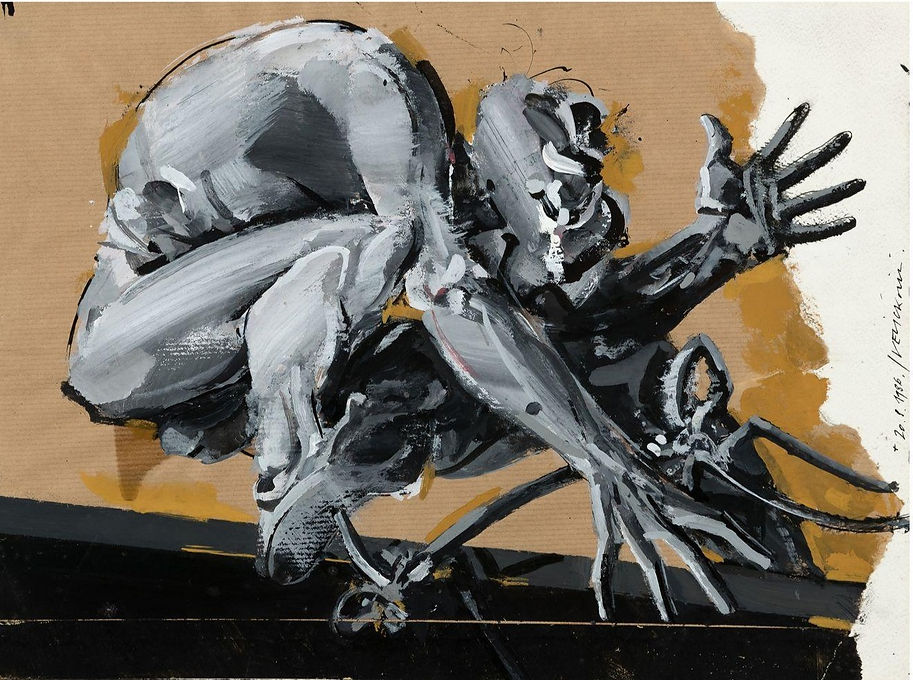
VLADIMIR VELICKOVIC

VLADIMIR VELICKOVIC

VLADIMIR VELICKOVIC

VLADIMIR VELICKOVIC
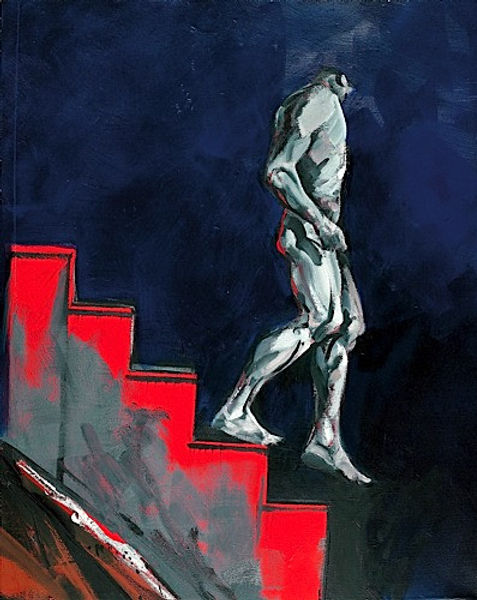
VLADIMIR VELICKOVIC

VLADIMIR VELICKOVIC

VLADIMIR VELICKOVIC

VLADIMIR VELICKOVIC
Samuel Buri
b. 1935
Samuel Buri
Samuel Buri is a Swiss artist whose art practice fuses his interest in the natural world with a Neo-Expressionist style. Akin to artists from the Junge Wilde movement, like Salomé, Elvira Bach, and Martin Kippenberger. His work presents an eclectic oeuvre of life-size sculptures, garden scenes, abstractions, and window views. Born on September 27, 1935 in Täuffelen, Switzerland, Buri moved to Basel with his family in 1948. An encounter in the early 1950s with the American artist Sam Francis, spurred his interest in becoming a painter. The artist has enjoyed significant recognition for his works, and has exhibited at the Kunsthalle Basel in 1969 and the São Paulo Biennial in 1971. He lives and works in Basel, Switzerland.

Samuel Buri
Self Portrait
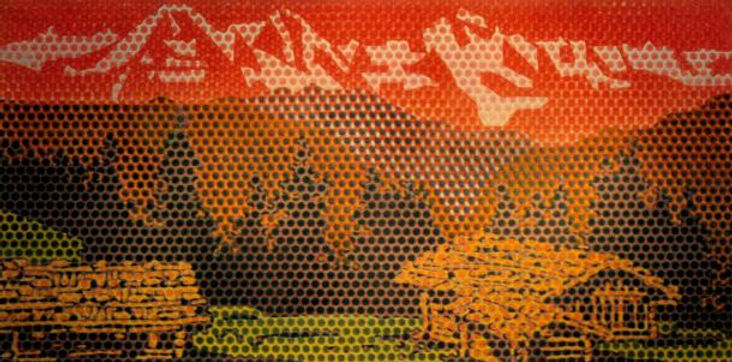
Samuel Buri

Samuel Buri

Samuel Buri

Samuel Buri

Samuel Buri

Samuel Buri

Samuel Buri

Samuel Buri

Samuel Buri
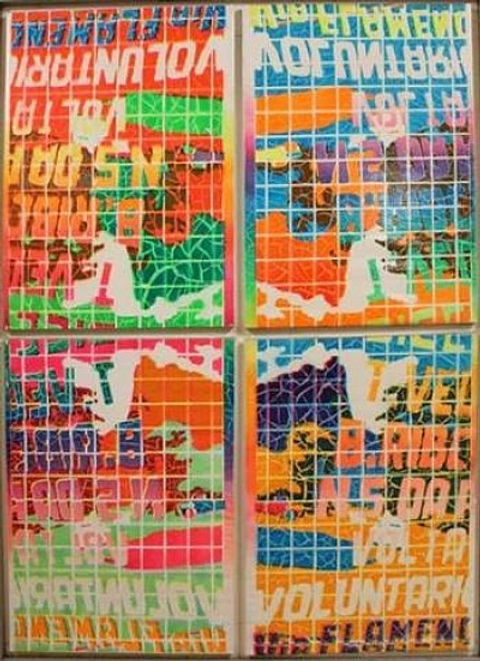
Samuel Buri

Samuel Buri

Samuel Buri

Samuel Buri

Samuel Buri

Samuel Buri

Samuel Buri

Samuel Buri
Georg Baselitz
b.1938

Big Night Down the Drain
Georg Baselitz
1963
Georg Baselitz
(born 23 January 1938) is a German painter, sculptor and graphic artist. In the 1960s he became well known for his figurative, expressive paintings. In 1969 he began painting his subjects upside down in an effort to overcome the representational, content-driven character of his earlier work and stress the artifice of painting. Drawing from myriad influences, including art of Soviet era illustration art, the Mannerist period and African sculptures, he developed his own, distinct artistic language.
He was born as Hans-Georg Kern in Deutschbaselitz , Upper Lusatia, Germany. He grew up amongst the suffering and demolition of World War II, and the concept of destruction plays a significant role in his life and work. These biographical circumstances are recurring aspects of his entire oeuvre. In this context, the artist stated in an interview: "I was born into a destroyed order, a destroyed landscape, a destroyed people, a destroyed society. And I didn't want to reestablish an order: I had seen enough of so-called order. I was forced to question everything, to be 'naive', to start again." By disrupting any given orders and breaking the common conventions of perception, Baselitz has formed his personal circumstances into his guiding artistic principles. To this day, he still inverts all his paintings, which has become the unique and most defining feature of his work.

Georg Baselitz
:

Rebel
Georg Baselitz
1965
:

Large Head
Georg Baselitz
1966

Female Nude on a Kitchen Chair
Georg Baselitz
1979
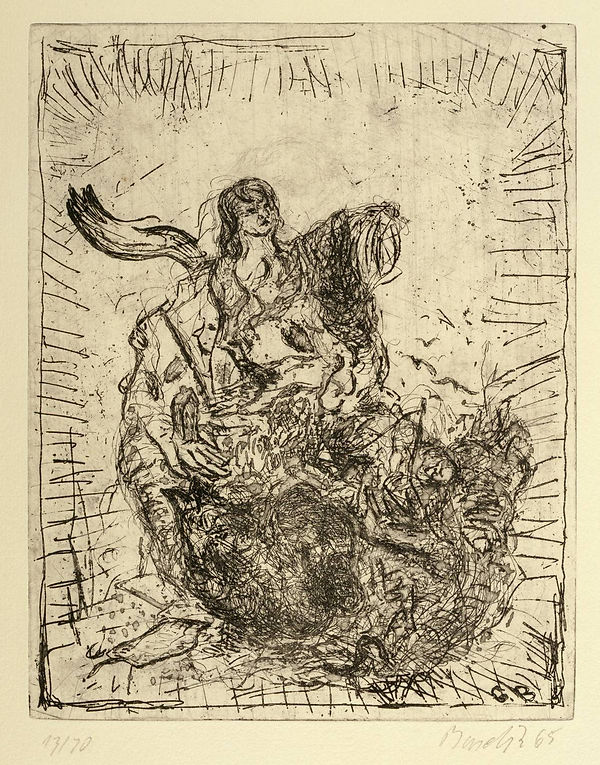
Georg Baselitz
Untitled
1965

Divided Hero
Georg Baselitz
1966
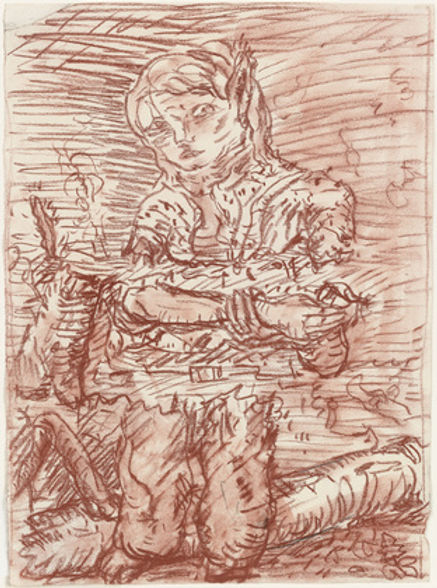
Waldarbeiter
Georg Baselitz
1966
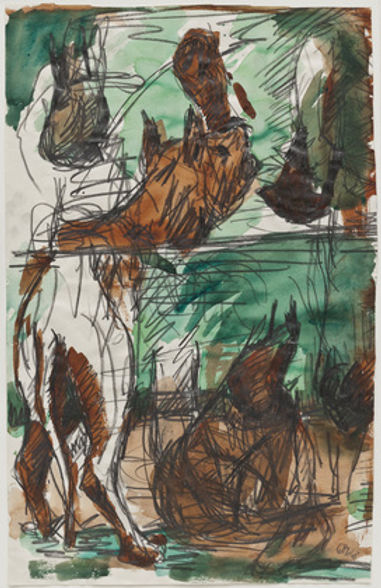
Dog-Split
Georg Baselitz
1968

Woodmen
Georg Baselitz
1968

Nude with Three Arms
Georg Baselitz
1977

Schlafzimmer (Bedroom;
1975,
Georg Baselitz.

GEORG BASELITZ
Elke I

Georg Baselitz,
Fingermalerei – Adler (Finger Painting – The Eagle),
1972

Georg Baselitz,
The Great Friends,
1965
Karl Horst Hodicke
1938 – 2024

Karl Horst Hödicke
Adam and Eve
1977
Karl Horst Hodicke
Karl Horst Hödicke is a contemporary German artist known for his Neo-Expressionist paintings of Berlin, the countryside, and imagined narratives. The artist’s broad brushstrokes and specific color palette provide his works with a sense of seeing a place through memory. “I consider myself a conservative artist, conservative in my approach, because as a figurative artist I’m convinced that art is about shaping a world as seen through your own eyes,” he has explained. Born on February 21, 1938 in Nuremberg, Germany, he and his family fled to Vienna in 1945. In 1957, Hödicke moved to Berlin, enrolling in the Technical University for architecture before transferring to the Hoschule der Künste, where he studied painting under Fred Thieler. By the mid-1960s, the artist was immersed in the milieu of the Neuen Wilden, alongside George Baselitz, Markus Lüpertz, and A.R. Penck. Hödicke has gone on to participate in numerous shows, including documenta 6 in 1977. He continues to live and work in Berlin, Germany. Today, the artist’s works are held in the collections of The Museum of Modern Art in New York, the Museu d’Art Contemporani de Barcelona, and the Hamburger Banhof in Berlin, among others.

Karl Horst Hödicke

Karl Horst Hödicke

Karl Horst Hödicke

Karl Horst Hödicke

Karl Horst Hödicke

Karl Horst Hödicke

Karl Horst Hödicke

Karl Horst Hödicke

Karl Horst Hödicke

Karl Horst Hödicke

Karl Horst Hödicke

Karl Horst Hödicke
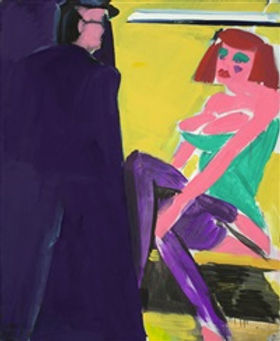
Karl Horst Hödicke

Karl Horst Hödicke
A. R. Penck
1939 – 2017
A. R. Penck
Ralf Winkler, alias A. R. Penck, who also used the pseudonyms Mike Hammer, T. M., Mickey Spilane, Theodor Marx, "a. Y." or just "Y" (5 October 1939 – 2 May 2017) was a German painter, printmaker, sculptor, and jazz drummer. A neo-expressionist, he became known for his visual style, reminiscent of the influence of primitive art.
Penck was born in Dresden, Germany. In his early teens, he took painting and drawing lessons with Jürgen Böttcher, known by the pseudonym Strawalde, and joined with him to form the renegade artists’ group Erste Phalanx Nedserd (“Dresden” spelled backward). The group sought artistic work without compromise. For this reason, their members refused to study at an academy. The group members were also denied membership in the Association of Visual Artists of the GDR. They, therefore, had to earn a living as workers or craftsmen. He later worked for a year as a trainee draftsman at the state advertising agency in Dresden. From 1955 to 1956, Winkler was a draftsman for the publicity agency DEWAG. Since 1956, he attempted but failed to gain admission to the Dresden Academy of Fine Arts and the Berlin University of the Arts in East Berlin. Penck worked for several years as a stoker, a newspaper deliverer, a margarine packer and a night watchman. He also had a small acting role in the film Vintage 45 (1966), directed by Jürgen Böttcher.
In 1966, Winkler became a candidate to join the Association of Plastic Artists, now under the artistic pseudonym A. R. Penck. which was chosen after the geologist Albrecht Penck. Since 1969, he had increasingly problems with the Ministry of State Security of the GDR. His paintings were confiscated and his membership in the Association of Visual Artists of the GDR (VBK) was rejected.
Winkler was one of the founding members, in May 1971, together with Steffen Terk, Wolfgang Opitz and Harald Gallasch, of the artist group GAP, which existed until 1976. Since 1973, he worked under the pseudonyms Mike Hammer and TM. After serving the military service in 1974, he was awarded the Will Grohmann Prize, in 1975, by the Academy of Arts in West Berlin. By this time, the state security control over him also increased. In 1976, Penck met the West German painter Jörg Immendorff, with whom he would work together in the following years. In their work, they campaigned for the abolition of the inner German border, and for the dissidents, among them Rudolf Bahro and Robert Havemann. Since 1976, he also signed simply Y. In 1977, he had some of his paintings confiscated. In May 1979, several of his works and records were destroyed during a break-in into his studio.

A. R. Penck

A.R.Penck

A.R.Penck

A.R.Penck

A.R.Penck

A.R.Penck

A.R.Penck
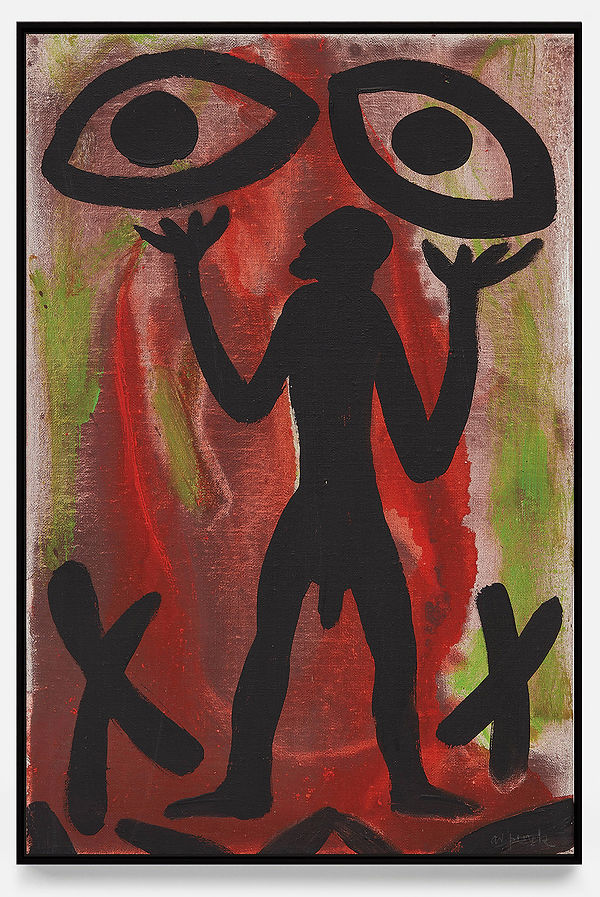
A.R.Penck

A.R.Penck

A.R.Penck

A.R.Penck

A.R.Penck

A.R.Penck

A.R.Penck
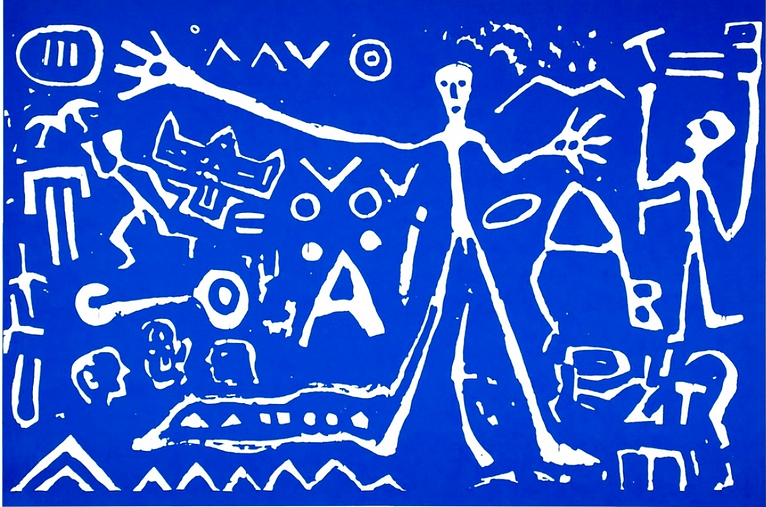
A.R.Penck

A.R.Penck

A.R.Penck

A.R.Penck